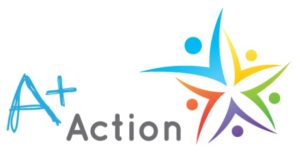Last January, I had the privilege to participate in the 2nd Children’s Physical Activity and Sport Conference (0-12 years) held in Finland. The participants came from 18 countries and I was unfortunately the only representative from Canada.
The main conferences, oral presentations and posters covered an impressive variety of themes such as public health, motor development, motor skills and sports, unstructured play, school, daycare, family, sport, motor evaluation and impact of physical activity on the brain and academic learning skills. The following provides a brief overview of the main findings in research and world trends in terms of appropriate practices to encourage children to take part in physical activities as well as sport.
With a long-term perspective of public health, I must state that Professor David F. Stodden offered a strong keynote address demonstrating that a measured motor competency, with a standardized observation tool, is the predictor of a high level of physical activity in children. Therefore, the more a child is stimulated to efficiently develop a large variety of fundamental motor skills in early age, the more chances for him to become an active person an average of 60 minutes per day.
However, a significant variable allows for the improvement of motor competency in children, which is an effective intervention. The main focus of this conference was the quality of training offered to those who have the mandate to make children participate in physical activities. Globally, training should focus on the motion process while breaking down the key elements of the fundamental motor skills in order to help children improve while participating in proposed games and activities.
On a masculine side, the disturbing but enriching conference given by Professor Anthony Pellegrini dealt with the development and function of rough-and-tumble play in childhood and adolescence. Experience and research findings by this world’s leading expert clearly demonstrate that it is advisable to tolerate this kind of behaviour in daycares and schools, particularly for boys global development. However a structure is needed where the personnel is trained to supervise the children and recognize the difference between a friendly game and an aggression. Direct benefits for children are numerous:
• Helps promote physical fitness (muscular strength and endurance, cardiovascular capacity, etc.)
• Promotes growth (musculo-skeletal system)
• Allows to move out of early childhood
• Contributes to sociability, making friends
• Learning a social code (ex : decipher when it is too hard, self control)
• Looking for solutions (ex : identify game rules)
• Initiation to heterosexual contacts
• Natural selection of leaders
At the school level, Professor Anna Bugge’s conference was particularly noticed since she was looking into demonstrating the real effects on health and school success of a daily integration of different physical activity categories. A comprehensive meta-analysis of literature on hundreds of studies lead her to the following conclusions:
• Active pauses and all forms of physical activity in class increase students attention and concentration. However there is no direct effect on academic performance. There are not enough longitudinal studies to demonstrate significant results to that effect.
• After-school physical training and extracurricular activities (ex : dance, running, basket-ball, football, cheerleading, etc.) improve physical condition and global health. Creativity and math results are also improved, but there are not enough longitudinal studies to demonstrate significant results to that effect.
• Active transportation (walking and cycling) improves fitness and global health but has no effect on academic results.
• Unstructured games during morning recess has a positive impact on academic results but there are not enough longitudinal studies to demonstrate significant results to that effect.
• Increased teaching time in physical education has positive results on the physical condition and global health. The increased hours to the detriment of other subjects has not demonstrated a negative effect on the academic results. However, there are not enough longitudinal studies to demonstrate significant results to that effect.
Altogether, physical activities at school improve certain aspects of the physical condition and global health. This meta-analysis does not allow to confirm major significant effects on academic results. While some studies showed positive impact, there are not enough longitudinal studies with large samples through all physical activity categories at school (active pause in class, physical education, recess, extracurricular activities, active transportation).
On the sport side, Professor Marije T. Elferink-Gemser addressed performance development and detection of talent in young athletes. The ideal age for detecting an athlete is around 10-12 years old in a global perspective where selected children would have experienced a wide variety of sports between the ages of 4 and 10. Such an experience must be a shared responsibility between the school and the parents. Many criteria are used to detect the best talents in sports. According to international experts these are the following criteria by order of importance:
- Sports in general learning ability
- Attitude (temperament, perseverance, effort, positivism, etc.)
- Level of fundamental and sport motor abilities
- Creative capacity
- Social capacity
The development of a high-performance athlete is prepared over a period of 10 years. In addition to the global preparation in relation with the sport of choice, crucial importance must be given to provide tools to the athletes to deal with quitting or changing sport, should the situation arise. The performance development process must be based on three key foundations for the athlete:
- Knowledge
- Will
- Know-how
In conclusion, I hope these four conferences overview increased your awareness to the fact that research is important to push forward positively our practices as parents and school in the sport and physical activity area. Society as a whole is more sedentary, it is therefore imperative to sensitize all those involved who have a responsibility to get our children moving as soon as early childhood in a global health perspective. Hoping you are a committed player!
Joël Beaulieu, Ph. D. (c), Motor consultant, A+ Action-www.aplusaction.com



Leave A Comment